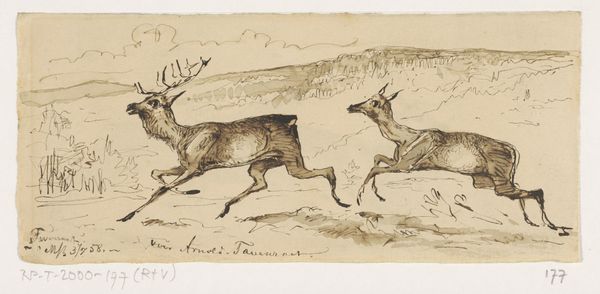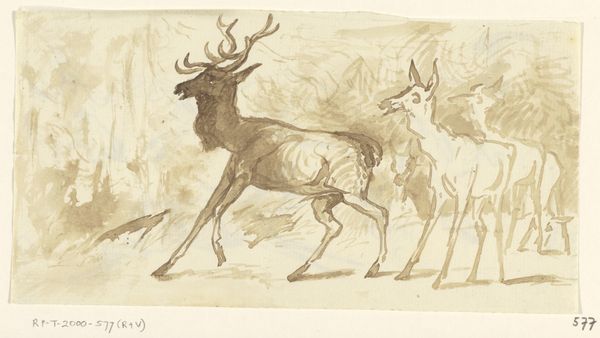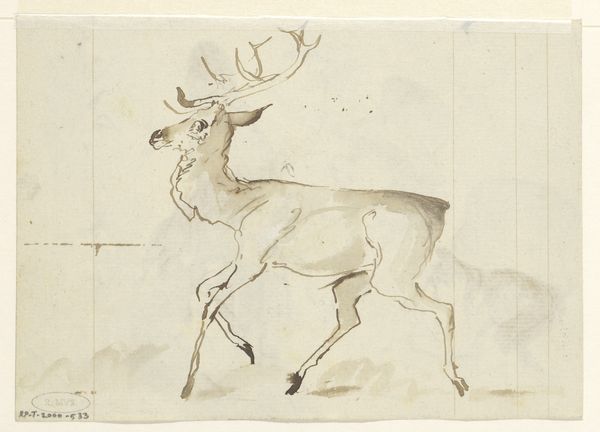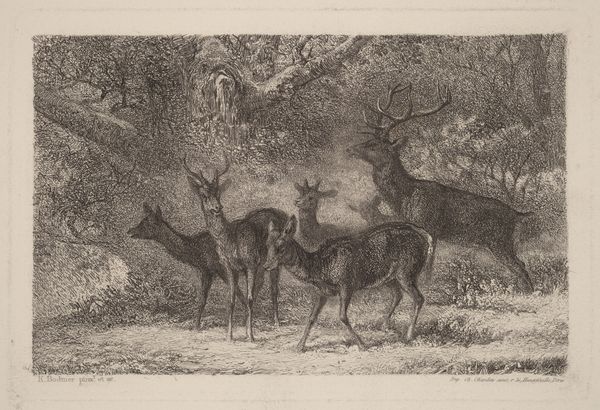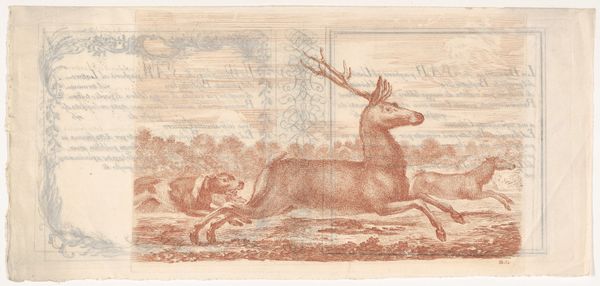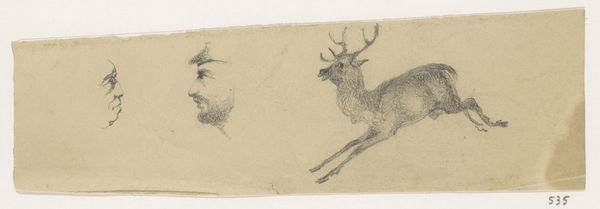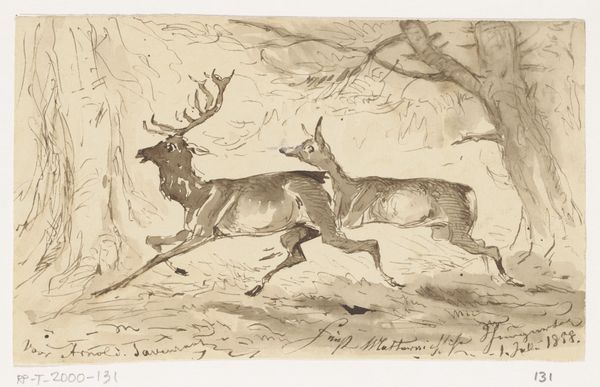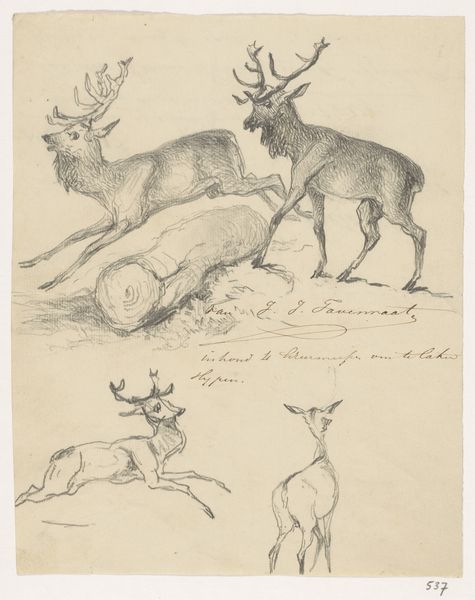
Dimensions: height 34 mm, width 55 mm
Copyright: Rijks Museum: Open Domain
Editor: Here we have "Two Fighting Stags," an engraving made sometime between 1768 and 1813 by Samuel Gränicher. It's rendered on toned paper. I’m struck by the intensity captured in such a small-scale piece. The lines create a real sense of movement and aggression. What structural elements do you observe in this engraving? Curator: I appreciate your observations. From a formalist perspective, I find the interplay of line and form most compelling. The engraver’s meticulous cross-hatching not only defines the musculature of the stags but also establishes a textural contrast between their bodies and the relatively sparse ground. The dynamic pose, a near-perfect symmetry mirroring the conflict, generates an unsettling yet visually arresting composition. Do you perceive a balance, despite the evident chaos? Editor: I see what you mean about the symmetry, now that you mention it. They mirror each other almost exactly. The lines are very close and tight together and that definitely shows the tension between the animals and in the work. Curator: Exactly. Notice also the economy of line in depicting the landscape—a deliberate choice, focusing our attention squarely on the stag’s engagement. How do the structural choices contribute to its overall aesthetic impact? Editor: The more simple, open background almost highlights the complex shapes and textures of the bucks. It forces the eye to look closely. It feels raw, somehow, even for a landscape. Curator: Precisely. It's the calculated manipulation of form and line that elevates the engraving. Editor: This focus on pure visual elements offers such a different way to appreciate art, looking past possible historical context. Thank you! Curator: A rigorous analysis, I think, unearths an inexhaustible wealth of material. A pleasure, indeed.
Comments
No comments
Be the first to comment and join the conversation on the ultimate creative platform.
